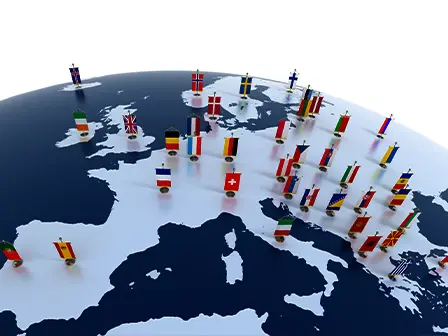International IP Regime
This course is part of a program and cannot be purchased individually.
Intellectual Property Rights provide legal recognition and protection to innovation and artistic work in its many forms—patents, copyrights, trademarks, designs, geographical indications, so on and so forth. Intellectual Property has both national and international dimensions. While the national dimension provides legal recognition and protection to IP, the international dimension lays down some minimum rights and provides for enforcement of IP in contracting States. The significance of the international conventions lies in recognising and giving national treatment to foreign IP. Without international conventions and cooperation between countries, inventors and IP holders would be apprehensive to showcase their work on international platforms. This module brings you the salient features of the international conventions that have significantly contributed to the development of Intellectual Property in the global trade environment. It helps you understand the influence of each Convention on particular forms of IP, like the Berne Convention for copyrights, the Madrid Convention relating to trademarks, etc. You will also appreciate the role of TRIPS Agreement, that came as an international attempt to lay standards for all forms of IP simultaneously.
This course is part of a program and cannot be purchased individually.

If a man is keeping an idea to himself, and that idea is taken by stealth or trickery, I say it is stealing. But once a man has revealed his idea to others, it is no longer his alone. It belongs to the world.
Linda Sue Park- 1. 📕 International IP Regime
- 1.1 ▸ The Paris Convention, 1883
- 1.2 ▸ The Berne Convention, 1886
- 1.3 ▸ The Universal Copyright Convention, 1952
- 1.4 ▸ International Convention for Protection of Performers, Producers of Phonograms and Broadcasting Organisation, 1961 (The Rome Convention)
- 1.5 ▸ The WIPO Convention, 1967
- 1.6 ▸ The Patent Cooperation Treaty, 1970
- 1.7 ▸ The TRIPS Agreement, 1994
- 1.8 ▸ Madrid System Concerning International Registration of Marks, 1989
- 1.9 ▸ Convention on Biological Diversity
- I. Exercises
- ✒︎ Exercise set I
- ✒︎ Exercise set II
- II. Examination pointers
- ≛ Exam pointers
WHY TAKE THIS COURSE?
IP has gained significant recognition in the global trade environment. The study of International IP Regime gains a lot of academic relevance, that sets forth the framework for the modern global system. The learning objectives of the course are:
- To understand the salient features of important International IP conventions.
- To analyse the contribution of the IP Conventions in laying down international standards and uniformity in laws, to promote global trade.
- To appreciate the significance of the Conventions in IP enforcement in contracting States.
This course is part of a program and cannot be purchased individually.
Instructors

Dr Pratima Narayan
Advocate & Mediator, Co-founder, Techlawlogi Consulting LLP
Dr Pratima Narayan has served the legal academia for over 20 years as a visiting faculty at various reputed law schools and business schools. Her expertise lies in areas of commercial contracts, consumer law, e-commerce and Intellectual Property Rights.

Presented by: Dr Charu Mathur
AOR, Supreme Court
Dr Charu Mathur is an Advocate on Record with the Supreme Court of India. She has over 20+ years of rich and diverse expertise in corporate, commercial, civil, criminal and constitutional law matters.

The most important thing about intellectual property vs. creative expression is that copyright law was created not to stifle creativity but to encourage creativity.
Shepard FaireyCertificate
Complete this course and exercises to earn a certificate. Share it with your friends, colleagues, and employers.

Limit Reached or Trial Expired
You have reached the limit of 2 audit enrollments or your trial period has expired.



